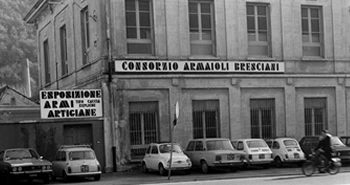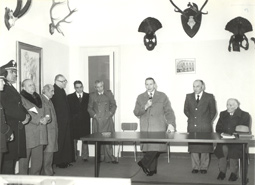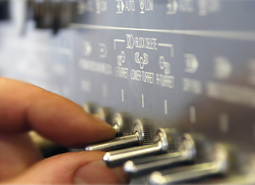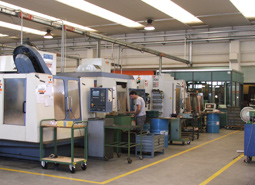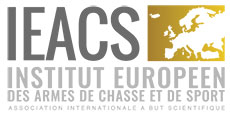History
The origins
The Italian Consortium of Gunmakers planted its roots in the thrilling early 60s with the foundation of ArtArm, a company appointed to unite the small companies operating in the gun sector and get them ready to penetrate the international markets, starting with Greece.
In 1970 ArtArm evolved into a more hands-on and articulated entity called Community of Small Gunmakers, which in 1975 became the Consortium.
This happened right before the controversial Law 110 was executed and caused the beginning of the fight to protect the freedom to hunt and manufacture firearms. It was right then that hunters and small gunmakers started to be negatively affected by vexing new laws and regulations supported by a totally misinformed public. Then and there the Consortium became their advocate. The fight was hard from the start, and it is not over yet, but the Consortium has been able to weigh in every legislative decision more and more over the years, and constantly monitor and assess every provision to make sure they take into consideration the needs of gunmakers and hunters alike. But that is not all the Consortium focuses on: one of the most important functions of its Board of Directors is to safeguard the continuity of the gun making craft, with its traditions and fundamental principles. That is the reason why the Consortium has been fighting hard to keep the Gun Making School in operation since 1975 when a ministerial decision promoted its interruption.
The Consortium reached another milestone in 1976 when it attended, along with its forty-four members, the European gun show in Copenhagen for the first time. The Consortium has never stopped attending the most important international trade shows and events after that.
The 80s
The early 80s looked extremely threatening. Many black clouds were hanging over the heads of gunmakers and hunters who had to deal not only with ill-conceived legislations, but also with the impending Referendum to abolish the right to hunt supported by the Radical Party. The level of activity at the Consortium became frantic. Its representatives got very busy part taking in every public debate and round table held to educate the public on the reasons NOT to abolish hunting.
At the same time, they were trying to help the most influential political figures of the time see the importance of hunting from an historical and economic stand point, as well as for conservation purposes.
Hunters keep trails walkable and woods clean; their hunting huts incorporate the ideals of true outdoor living: cleanliness, tidiness, true and unconditional hospitality. Thanks to the efforts of many, the Supreme Court later on declared the Referendum inadmissible.
In 1980, The Consortium joined the newly born gunmaker association called Assoarmieri and attended the first edition of EXA, a tradeshow the Consortium board and members, as well as the Brescia Chamber of Commerce, truly lobbied and worked for. The next few years saw a continuous increase in the Consortium level of activities: from keeping the guard high against every attempt at abolishing the freedom to hunt (especially the new referendum proposals pushed forward by the Radical Party in 1980-81 and 1989) to negotiating fees charged by the National Proof House on every gun tested (since 1984 the Consortium share a board member with the National Proof House), attending and organizing meetings and conventions about hunting and the gun industry, helping members to plan their participation in domestic and international trade shows (the Consortium booth at the US SHOT Show has become the flag ship of the "Made in Italy"); keeping its members informed about new laws regulating hunting and gun making and also organizing courses to obtain the license to manufacture guns.
The 90s
As the last decade of the millennium went by, the Consortium shifted its main focus from the "here and now" of gun making in the Valley to a broader approach which included the "when and where". The President, Pierangelo Pedersoli, and his staff planned a media and cultural campaign to give the Consortium (CAB) more relevance and visibility, and automatically give it to everyone employed in the gun industry and to the gun making tradition as a whole.
Two videotapes were produced as a result of this mediatic effort: the first one called "Work, Art, History, Culture" in 1990 followed by "A firearm is born" in 1995. The two videos are the highest expression of a philosophy and a journey to open the doors of gun making and its socio-historical relevance to the world. This outward journey of the Consortium also had a more inward and radical destination: increase the awareness of all those employed in the gun industry that other than the monetary value, their work had other values all connected to the territory where they were born and worked.
The new millennium
The new millennium started with a bang. "2000 and 2001 were the best years in the last fifteen years" said Pierangelo Pedersoli. And what the Consortium had done to solidify and unite the industry played a big part in this success. Unfortunately, the depression that started quietly in 2003 and picked up over time heavily threatened and affected markets, big industries and small companies in every sector, from manufacturing to services (and banks did nothing to support companies, while their profits increased exponentially).
There was a new challenge and the Consortium decided to face it by increasing the speed of action: signing up for more domestic and international trade shows; adding new and more comprehensive courses to license businesses to manufacture, repair and sell firearms and explosives; offering more specific training (from raw material analysis to hardening processes); working closely with all relevant Institutions to give a modern and international look to the territory and production of the Val Trompia region.
But it was mainly in the second half of the first decade that the steady and strategic work of the Consortium leadership produced the most evident results. In 2005, on occasion of its 35th Anniversary, CAB started "TIMA", a vocational and technical school to train new Master Gunmakers (all school material provided by Pietro Beretta and other Consortium members); in 2007 the Consortium kick started the "Firearm Tourism" project with the grand opening of the Museum of Firearms and Gun Making Tradition (which had been in the works since 1996).
In May 2009 the Consortium organized the First Recurring Education Course about Legislation with speakers coming from the Ministry of the Interior. This was a very important result (the course would be repeated) to help trade operators (manufacturers, gun smiths and dealers) overcome the legislative confusion regarding non-military firearms (this is the only sector that cannot count on a comprehensive body of laws) which often leaves them restrained by obligations and prohibitions going back to 1860.
In 2010 CAB became more international, turned into the Italian Consortium of Gunmakers and fully embraced the new millennium with digitalization and traceability projects (which would later bring to the Sigma Portal), as well as new courses taught in a completely equipped Edu Center by extremely professional and well-trained teachers
The first course in manufacturing technology and techniques was a success. 35 people attended from all Italian regions (including Sardinia) and abroad. The need to improve the quality of manufacturing was very evident as well as the fact that only few organizations could meet that need.
By organizing the course, the Consortium truly met the needs of the time and catapulted Gardone and the Val Trompia region above and beyond the domestic borders.
The best possible way of fighting the recession was to show the world that firearms made in Gardone Val Trompia truly represented the best of the best in terms of performance, design and esthetics. People involved in the gun trade in the region had been able to hang on tight to the wisdom of their ancestors and cultivate the strength of their hands.
From 2010 to 2020 the Consortium moved to a bigger facility, created a fully equipped "Training Workshop" and added new courses for everyone passionate about the industry. The availability of more spacious classes made it possible to offer more and longer courses about ballistics, reloading, Blasters and Explosive Experts, hunting and sporting guns maintenance, antique and replica gun maintenance and ex-ordinance, as well as several recurring education classes for manufacturers and dealers. Attendees arrived from all over Italy and abroad, and their level of satisfaction monitored through questionnaires was very high.
Many years have gone by, but the sporting gun industry is still playing a leading role in the overall economy of the Gun District. CONARMI has been a determining factor to guarantee the cohesion and synergy of all the actors working in this space. And the numbers talk to that.

